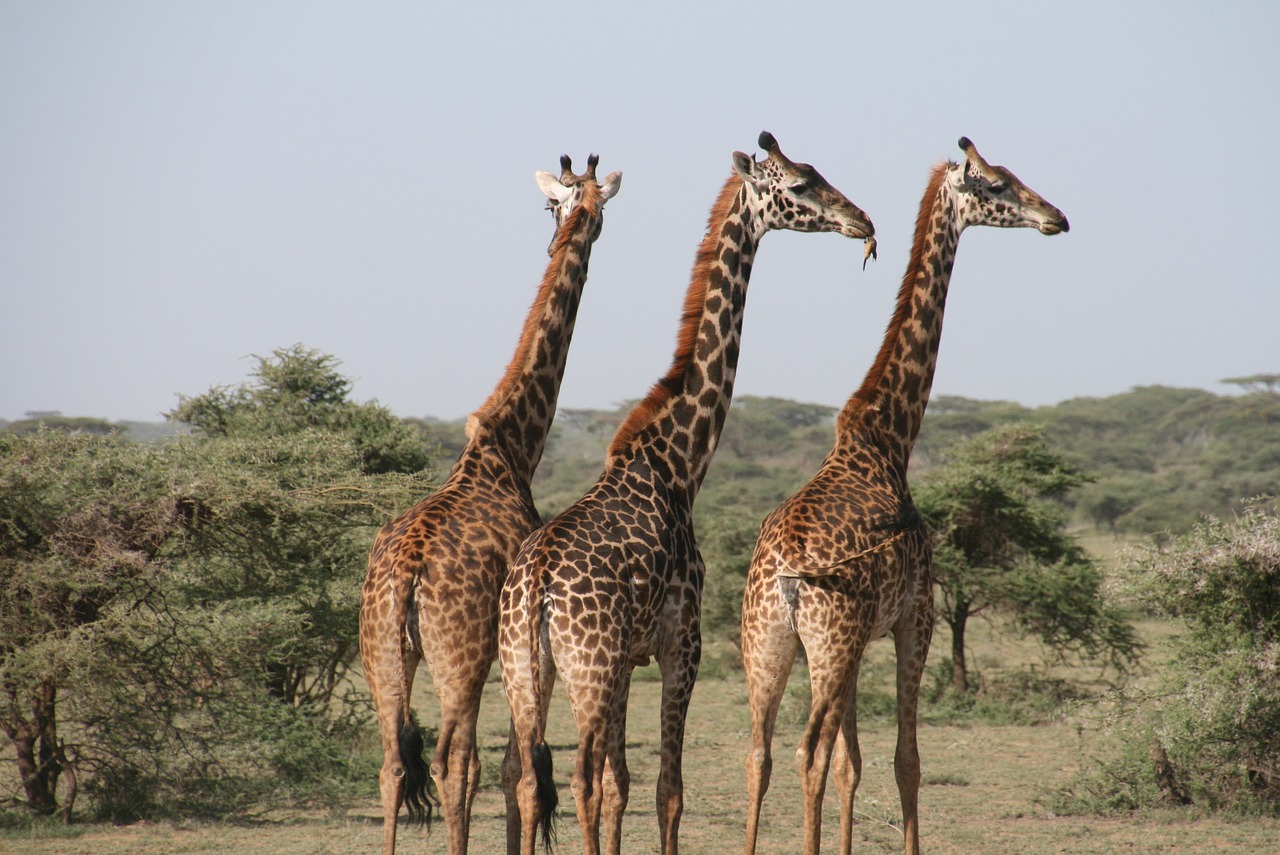The Long and Short of It: Why Do Giraffes Have Long Necks?
Giraffes are truly iconic, and easily recognisable by their towering height and, of course, their incredibly long necks. So, why do giraffes have a super long neck? One theory, like many things in nature, is adaptation and survival (food and fighting!).

Food: Reaching for the High Leaves:
The most common explanation is that the giraffe’s neck evolved to give it an advantage in finding food. Giraffes are herbivores, meaning they eat plants. In the African savanna, where they live, many of the most nutritious leaves are located high up in the trees, out of reach of most other browsing animals like zebras and antelopes. With their long necks, giraffes can reach these leaves with ease.
Their long, powerful tongues (up to 18 inches long!) help them grab leaves. This allows them to access a wider variety of food sources, especially during dry seasons when lower leaves become scarce. It’s easier to find food if you aren’t having to share it with a variety of other animals too!

Fighting: Using Their Neck as a Weapon:
This is another theory: the giraffe’s long neck may have evolved not just for feeding, but also for fighting! Male giraffes compete for dominance and mating rights. They engage in a ritual called “necking,” where they swing their heads and necks at each other, trying to land blows with their bony heads. Ouch!
The giraffe with the longer, stronger neck is more likely to win these contests and secure breeding rights. Over time, according to this theory, giraffes with slightly longer necks may have been more successful at reproducing, passing on the genes for a long neck to future generations.

Why Do Giraffes Have Long Necks?: Super Cool Facts
No matter the reason for its evolution, the giraffe’s neck is an incredible feat of engineering. Here are some cool facts about how a long neck works:
- Seven Long Vertebrae: Unlike most mammals, giraffes don’t have more vertebrae in their necks. They just have seven, like us! But each vertebra in a giraffe’s neck is incredibly long, stretching up to 12 inches!
- A Strong Heart: To pump blood all the way up that long neck to the brain, a giraffe has a powerful heart that weighs about 25 pounds – that’s about the size of a basketball!
- Blood Pressure Regulation: When a giraffe lowers its head to drink, special adaptations prevent too much blood from rushing to the brain, which could cause them to faint.
- Flexible Tongue: A giraffe’s long, prehensile tongue is not only strong enough to grab leaves, but it’s also covered in prickly papillae that help them strip leaves from branches.
A Super Long Neck for a Super Cool Animal!
The giraffe’s long neck is a truly remarkable and it allows them to thrive in their environment. Two theories for having a super long neck are food and fighting. However, whether it’s for reaching the tastiest leaves or battling for dominance, the long neck is a key part of what makes giraffes such unique and fascinating creatures.
So next time you see a picture of a giraffe, take a moment to appreciate the amazing adaptations that allow these gentle giants to reign supreme in the savanna!
To find out more about Giraffes, and how to help them, visit the WWF website.

Extra information
Animal-Club provides animal parties or animal handling workshops. You will be able to see, learn and interact with many wonderful animals with the help of our presenters. Our mobile zoo has many friendly animals such as rabbits, tarantulas, geckos, vinegaroons and more, perfect for an animal party. We can also , come over to your school for an animal school visit or arrange for an animal workshop with us where the children can learn about looking after animals and animal behaviour, and have fun too.



